Demographics of hip dysplasia in the Maine Coon cat
In the world of purebred cats, the Maine completely dominates in suffering from hip dysplasia. No other breed or non-breed comes near in terms of prevalence. The right hip is more likely to be diseased compared to the left. The disease can make Maine Coons aggressive and lose interest in human attention (presumed due to the persistent discomfort) which is sad as this cat is calm and friendly when healthy and well cared for. The disease was first mentioned in 1974.
This article sets out information about a large number of Maine Coon cats which suffer from hip dysplasia. I will present the information in bullet form below:
- There were 2732 individual cat participating in this study of which 99.9% were Maine Coons (2708).
- The youngest Maine Coon cat with feline hip dysplasia (FHD) was four months of age.
- The oldest was 60 months of age.
- Of the 2708 Maine Coon cats with hip dysplasia, 2548 had non-borderline symptoms which meant it was full-blown hip dysplasia.
- Hip dysplasia was more common in males at 27.3% compared to females at 23.3%.
- The older cats were more likely to have severe dysplasia.
- Hip dysplasia in both hips (bilateral FHD) had a prevalence of 56%.
- Those cats with bilateral FHD had more severe dysplasia than those with unilateral dysplasia.
- The month/season of birth or geographic region or origin did not influence the prevalence of FHD
- Of the 2548 cats with FHD, the scientists knew the geographic residence of 2450 of them. The cats were distributed as follows: North America 1281 (52.3%), Europe 1114 (45.5%), Asia, Australia or New Zealand 55 (2.2%).
- In North America, 1159 cat had FHD (47.3%).
- In Europe the breakdown was Finland 249 cats (10.2%), Sweden 181 cats (7.4%), Germany 174 cat (7.1%) and Austria 154 cat (6.3%).
- There were 1525 female cat with the disease and 1023 male cats.
- Those cats without FHD were statistically younger than those with FHD.
- Bilateral FHD was present in 55.3% of the female cats and 57.5% of male Maine Coon cats.
- With cats with one hip affected by the disease, the right hip was involved in 60.9% of cases and the left hip was involved in 39.1% of cases.
- There was no differences in the prevalence of FHD between the three geographic regions namely North America, Europe and Asia/Australia/New Zealand, or the USA and Finland.
- FHD comes on gradually with "subtle behavioural changes such as inactivity or aggression, lack of response to human attention, reluctance to go up or down stairs and resistance to handling. The onset typically occurs between three months and 3.5 years of age".
- The maybe muscle atrophy and restricted hip motion; pain on manipulation may occur in the more advanced cases.
- The first mention of FHD appears to be by a scientist called Peiffer in 1974 and another scientist whose name is Holt in 1978.


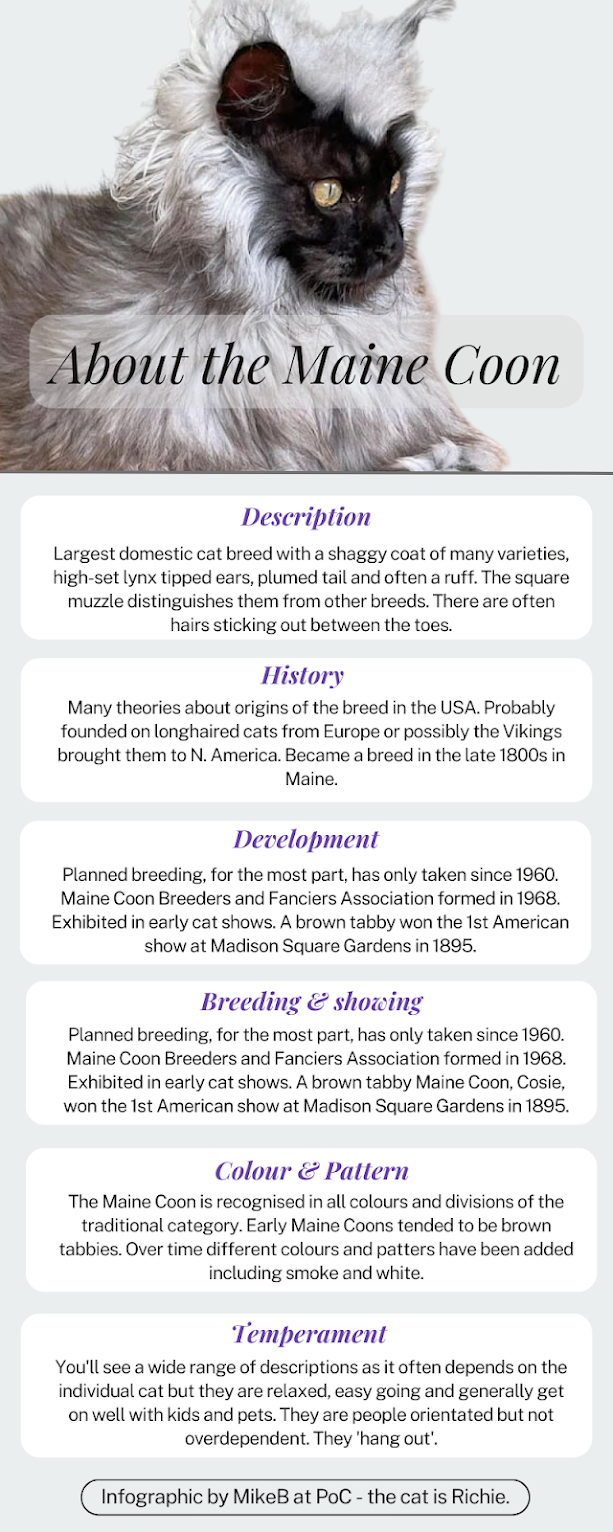

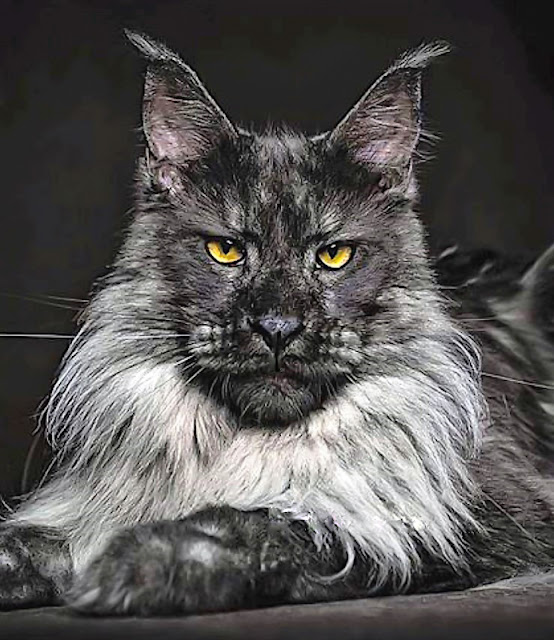



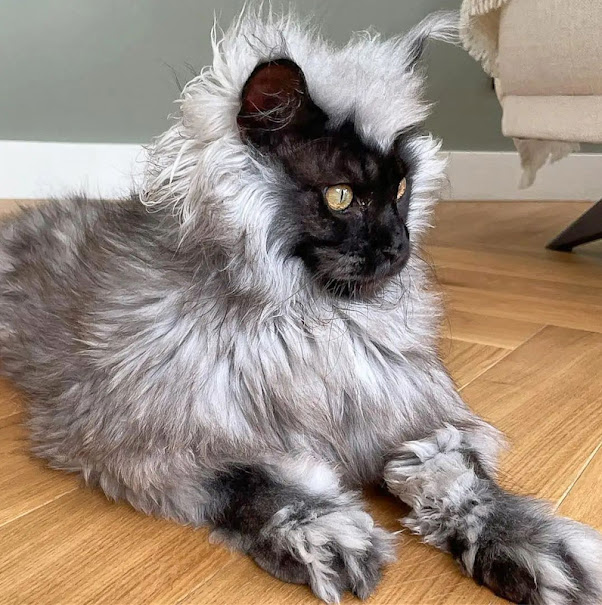

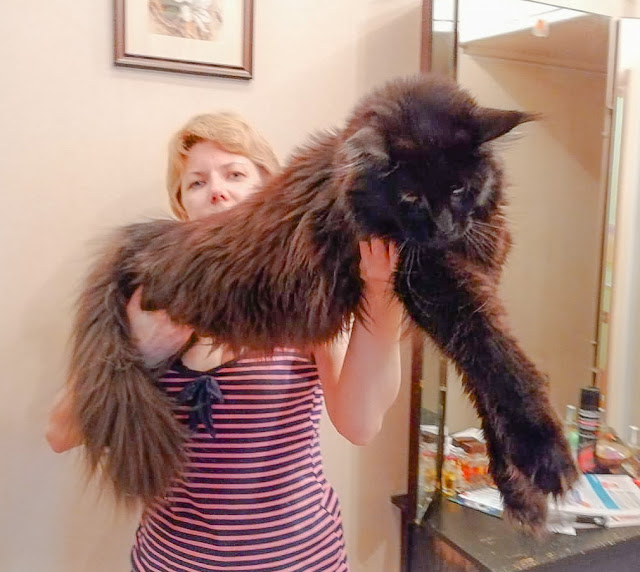
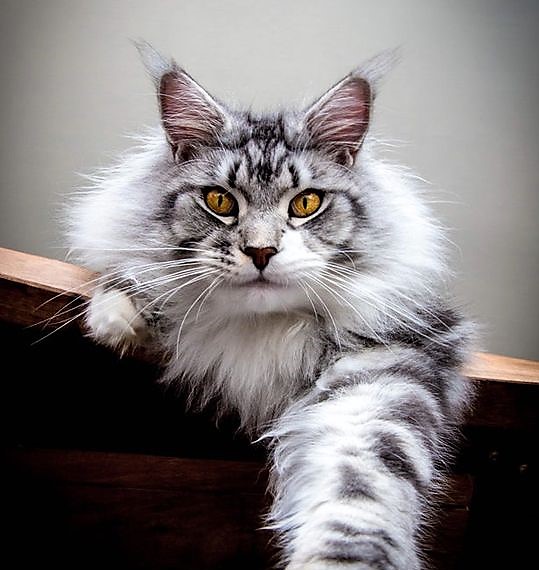
Comments
Post a Comment
Please share your Maine Coon experiences.